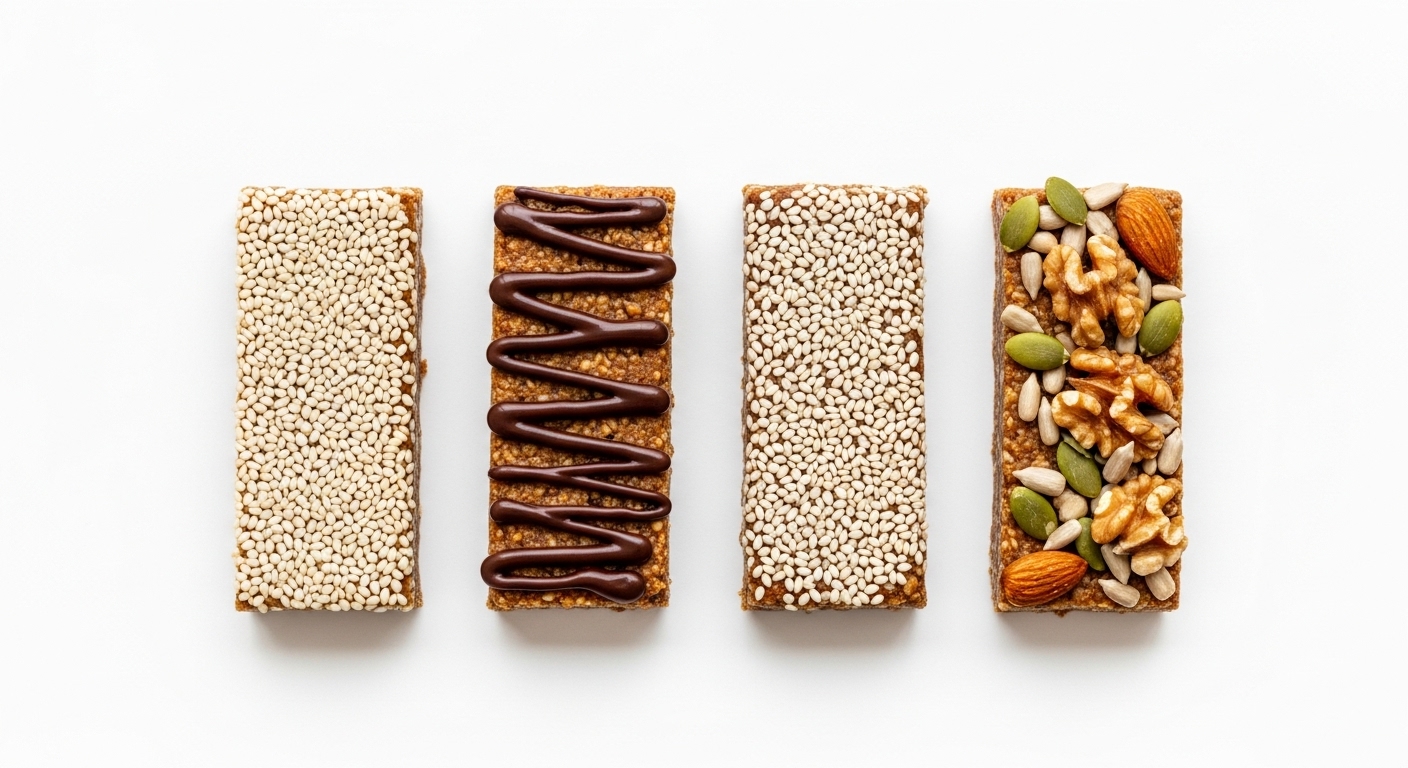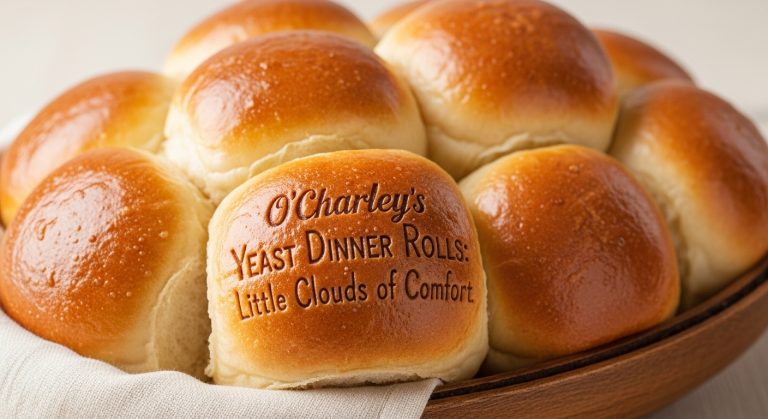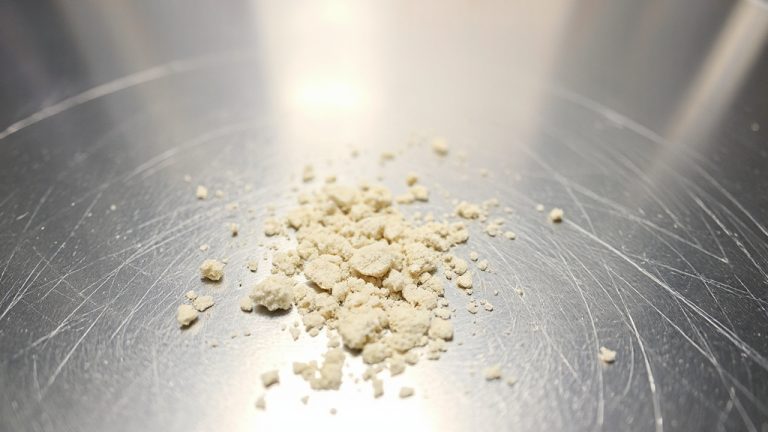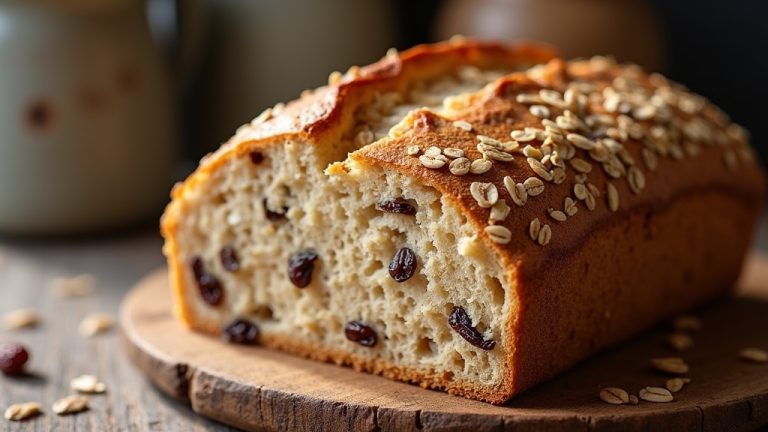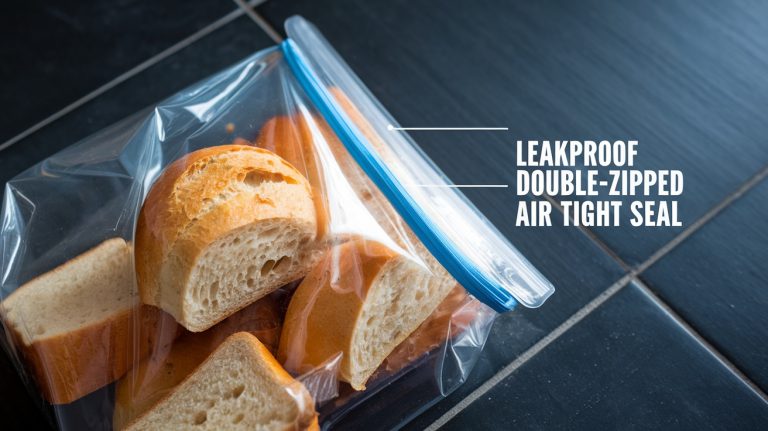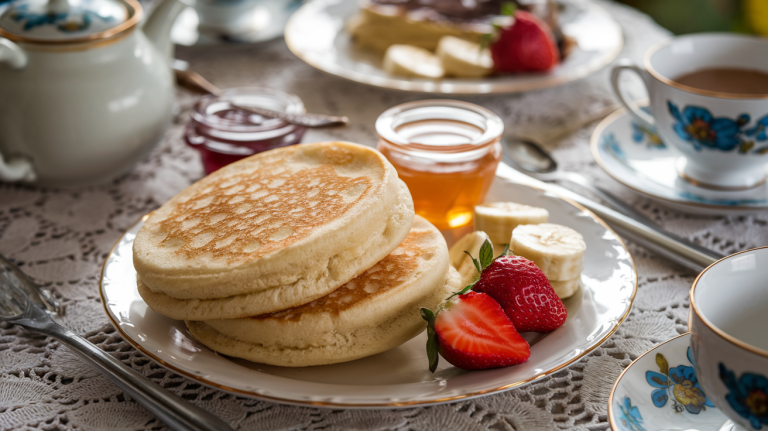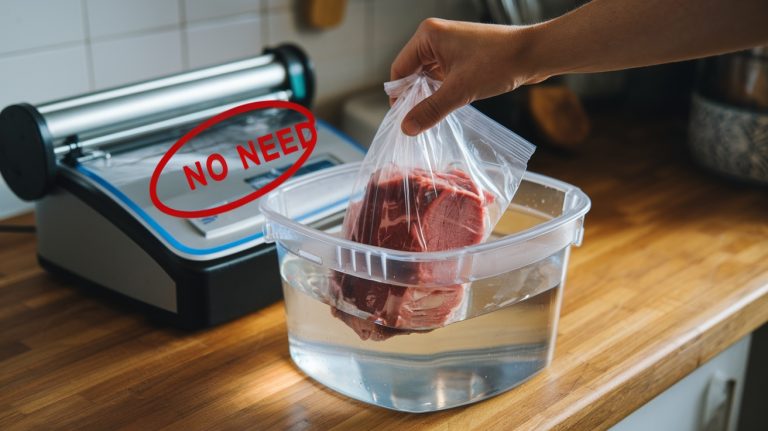Homemade Protein Granola Bars: Snack Smart, Stay Satisfied
You can easily make homemade protein granola bars using rolled oats, protein powder, nut butters, and natural sweeteners like honey to guarantee they bind well and offer 5 to 20 grams of protein per serving.
Add nuts, seeds, or dried fruits for extra nutrition and customize flavors to suit your dietary needs.
Proper cooling and storage will keep them fresh up to a week or longer if frozen.
Keep exploring to discover tips on boosting protein and perfecting your bars.
Key Takeaways
- Use rolled oats, protein powder, nut butters, and sticky sweeteners like honey as essential ingredients for homemade protein granola bars.
- Incorporate protein sources like whey, pea, or soy powder along with nuts and seeds to boost protein content effectively.
- Customize flavors with spices, dried fruits, extracts, and select sweeteners or binders to fit dietary preferences.
- Cool bars completely before slicing and store airtight; refrigerate for a week or freeze up to six months for freshness.
- Include fiber-rich ingredients and complex carbs for sustained energy, muscle repair, and appetite control.
Ingredients & Process Table for Soft and Chewy Protein Granola Bars
| Ingredient | Purpose / Process |
|---|---|
| Rolled oats (1½ cups) | Acts as a base and provides texture and complex carbs. |
| Protein powder (½ cup) | Choose from whey, pea, or soy for protein boost. |
| Nut butter (½ cup) | Adds healthy fats, protein, and helps with binding. |
| Honey or maple syrup (⅓ cup) | Serves as a natural sweetener and helps hold everything together. |
| Chopped nuts/seeds (¼–½ cup) | For crunch, extra protein, and healthy fats. |
| Dried fruit (¼ cup) | Adds sweetness, fiber, and texture. |
| Ground flaxseed or chia seeds (2 tbsp) | Enhances fiber and protein, improves binding. |
| Egg or flax egg (1) | Helps bind ingredients; use flax egg for vegan option. |
| Vanilla extract or cinnamon (1 tsp) | Optional: Adds depth and flavor without sugar. |
| Parchment paper | For lining the baking dish or storage between layers. |
Nutritional Benefits of Protein Granola Bars
Although protein granola bars vary in composition, they consistently deliver a substantial amount of protein—typically between 5 to 20 grams per serving—that supports muscle repair and growth.
You’ll find protein sources like nuts, seeds, whey, or soy powders, all proven to aid muscle synthesis and speed recovery after exercise. Precise measurement of ingredients using digital baking scales can help maintain consistent protein content in homemade bars.
Protein granola bars provide 5 to 20 grams per serving, fueling muscle repair and boosting recovery post-workout.
Eating these bars post-workout helps maintain energy and muscle endurance.
Beyond protein, their fiber content (2-5 grams) promotes fullness and helps control weight by reducing hunger and slowing digestion. Additionally, the inclusion of essential vitamins and minerals such as iron, calcium, and B vitamins fortifies these bars, supporting overall health.
Complex carbs within bars provide steady energy release, preventing crashes that cause snacking.
Healthy fats from nuts and seeds further enhance satiety and metabolic health.
Regularly consuming protein granola bars can help you meet daily protein needs, especially if you lead an active lifestyle or require increased protein intake.
Essential Ingredients for Homemade Bars
To create protein granola bars that effectively support muscle repair and sustained energy, you need to focus on selecting the right ingredients that fulfill specific nutritional and functional roles. Start with rolled oats for texture and bulk, and add protein powder—pea, brown rice, or vanilla whey—to boost protein content.
Nut butters provide creaminess, healthy fats, and extra protein, while sticky sweeteners like honey or brown rice syrup ensure proper binding. Incorporate eggs or flax eggs to maintain moisture and structure, especially in baked bars. Enhance bars with ground flaxseed, chopped nuts, and dried fruits for added protein, fiber, and micronutrients. Balance your sweeteners carefully to maintain firmness without excess sweetness.
Finally, consider dietary needs, opting for gluten-free oats or plant-based substitutes when necessary, to tailor bars to your nutritional goals.
Maintaining an optimal temperature during preparation can improve texture and binding. For quick preparation and versatility, you can use a no-bake method that combines just four key ingredients, allowing easy customization based on pantry staples and preferred flavors no-bake preparation.
Step-by-Step Preparation and Storage Tips
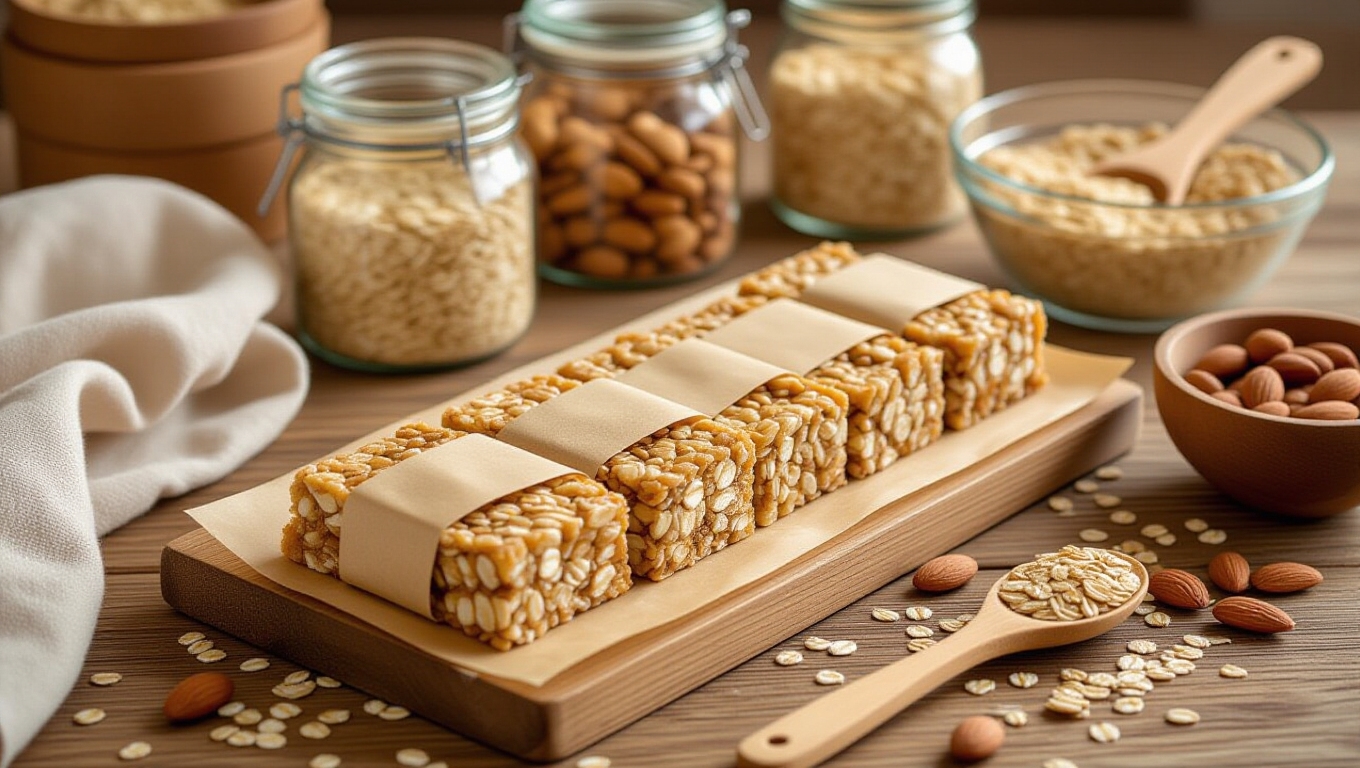
When preparing your protein granola bars, you’ll want to guarantee you cool them completely before slicing to maintain their structure and prevent crumbling. Letting them rest at room temperature for 30 to 60 minutes, or refrigerating softer bars, helps firm them up for cleaner cuts.
Using containers with a non-slip base during storage can prevent shifting and preserve bar shape. These bars are packed with 8g of protein per serving, making them a nutritious snack option.
Cool bars fully before slicing to keep their shape and avoid crumbling.
Use a sharp knife or bench scraper to slice uniform squares or rectangles, ensuring consistent portion sizes and easier storage.
For ideal storage, consider these tips:
- Store bars in an airtight container at room temperature for up to 3 days or refrigerate for about 1 week.
- For longer preservation, wrap bars individually and freeze for 3 to 6 months.
- Place parchment sheets between stacked bars to prevent sticking and maintain texture.
Enhancing Protein Content Effectively
Now that you’ve mastered preparation and storage, boosting the protein content in your granola bars can elevate their nutritional value and effectiveness as a snack.
Start by selecting protein powders wisely: whey offers a complete amino acid profile and fast absorption, while pea protein suits vegan and gluten-free needs but may alter texture. Avoid collagen powder to prevent dense, gooey bars.
Natural sweeteners like honey or maple syrup not only bind ingredients but also add flavor, enhancing the overall taste. Incorporating fermentation techniques similar to those used in sourdough starter preparation can introduce beneficial bacteria to improve gut health.
Combine powders to diversify amino acids without compromising texture. Incorporate high-protein ingredients like nut butters, eggs or flax eggs, oats, and seeds for added protein and improved texture.
Use moderate baking temperatures to preserve protein integrity or opt for no-bake recipes. Control moisture and ingredient ratios to maintain chewiness and prevent density.
Adjust bar size and portion to optimize protein per serving, targeting 9–20 grams for effective nutrition.
Customizing Flavor and Dietary Preferences
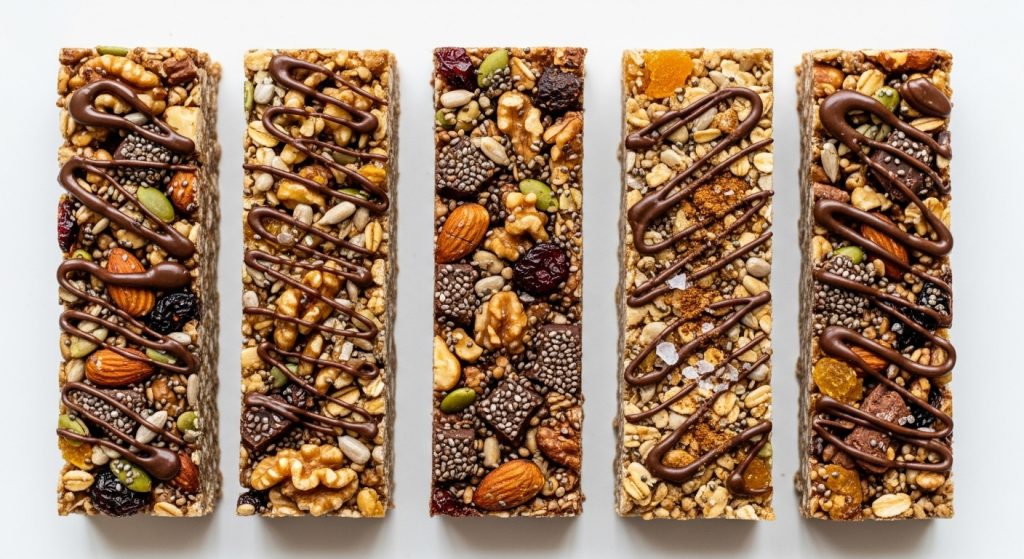
How can you tailor homemade protein granola bars to suit your unique flavor preferences and dietary needs? Start by selecting nuts or seeds to control texture and nutrition—swap almonds for pumpkin seeds if you need a nut-free option. Adding ingredients like sunflower seeds or herbs is a simple way to enhance flavor and add nutritional value.
Next, choose your sweetener and binder carefully; honey or maple syrup add distinct sweetness, while coconut oil or nut butters maintain chewiness without dairy. It is important to note that honey acts as a binder and sweetener, so substituting it with maple syrup may affect the bar’s texture and binding.
Finally, enhance flavor with spices, extracts, or dried fruits to create complexity and natural sweetness.
- Use finely chopped nuts/seeds for better binding and mouthfeel.
- Substitute eggs with flax eggs or chia gel for vegan bars.
- Incorporate cocoa powder or cinnamon to enrich flavor without extra sugar.
This customization guarantees your bars meet dietary restrictions while delighting your taste buds. The ability to experiment with different ingredients encourages creativity and personalization in your recipes.
Frequently Asked Questions
How Long Do Homemade Protein Granola Bars Stay Fresh at Room Temperature?
You might think your bars can last forever on the counter, but the truth is, they stay fresh for about a week at room temperature. To keep them tasting great, store them in an airtight container and avoid humidity.
If your recipe uses perishable ingredients, refrigerate them sooner. Remember, proper storage slows spoilage, so wrapping bars individually and letting them cool fully before sealing makes a big difference in their shelf life.
Can I Use Alternative Sweeteners Like Stevia or Monk Fruit in the Recipe?
You can definitely use stevia or monk fruit as alternative sweeteners since they’re heat-stable and zero-calorie, great for lowering sugar content. However, because they lack bulk and binding properties of syrups, you’ll need to add nut butters or fruit purees to maintain chewiness and texture.
Start slowly replacing sugar, combine both sweeteners to reduce any aftertaste, and refrigerate bars to help them firm up properly.
What Are the Best Nut-Free Protein Sources for Granola Bars?
Like an artist choosing pigments, you want nut-free protein powders like pea, soy, or rice to create a complete amino acid palette.
Seeds such as sunflower, pumpkin, chia, and flax add texture, healthy fats, and protein.
Grains like quinoa and oats boost protein and structure.
You can also use egg white or dairy-based powders if allergies aren’t an issue.
These choices guarantee your bars are nutritious, allergen-friendly, and delicious.
How Can I Prevent Granola Bars From Becoming Too Crumbly?
To prevent your granola bars from becoming too crumbly, use sticky binders like honey, maple syrup, or melted butter to hold ingredients together. Thoroughly mix binders with dry components and press the mixture firmly into the pan.
Bake until edges brown but centers stay slightly soft, then chill bars for at least two hours to solidify the binder.
Store bars in airtight containers refrigerated to maintain moisture and firmness, avoiding overbaking or excess dry ingredients.
Are Homemade Protein Bars Suitable for Post-Workout Recovery?
You deserve a delicious way to support your body’s comeback after exercise. Homemade protein bars are perfectly suited for post-workout recovery because they deliver high-quality protein and carbohydrates, essential for muscle repair and glycogen replenishment.
By customizing ingredients like whey, nuts, and oats, you control nutrient balance and avoid unwanted additives.
Consuming them within an hour after training helps speed recovery, reduce soreness, and maintain steady energy levels effectively.
Blend, Build, Benefit: Creating Your Perfect Protein Granola Bar
By crafting your own protein granola bars, you not only control ingredients but also maximize nutritional benefits, coincidentally aligning health with convenience.
As you blend essential components and tailor flavors, you enhance protein content precisely to your needs.
Remember, proper preparation and storage guarantee freshness and effectiveness.
This approach proves that thoughtful customization and evidence-based choices can effortlessly transform a simple snack into a powerful, personalized fuel source for your active lifestyle.

